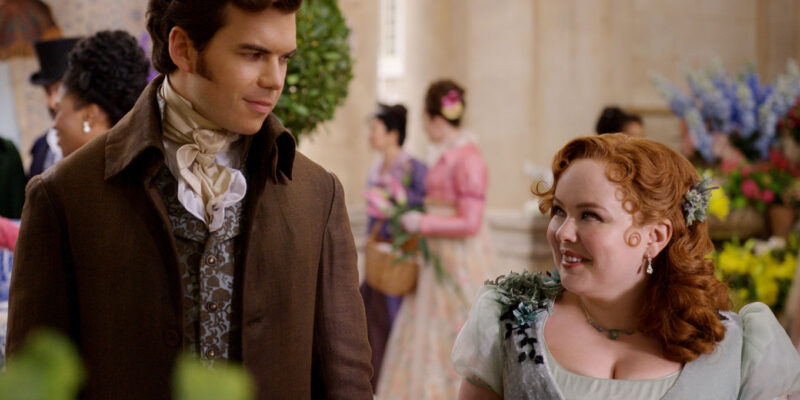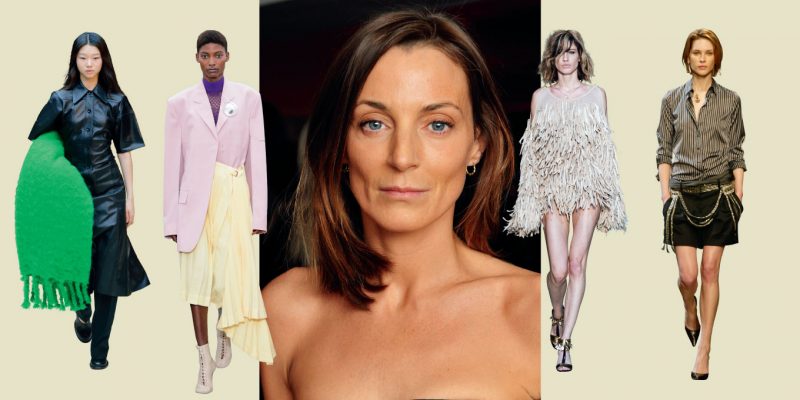Trends
The Case for Statement Sleeves This Season
How puffy sleeves are keeping every other trend at bay this season.
by : Leanne Delap- Jun 4th, 2020

It was Queen Bey who signalled the arrival of peak puffy sleeves in January when she appeared at the Golden Globes – the kickoff of awards season and, as we all know, the real start of the spring fashion season. Her custom Schiaparelli gown began as a sleek black column but rose up into gigantic, ethereal golden sleeves that formed literal peaks on either side of her ears. Not since Princess Diana’s wedding dress in 1981 have we seen sleeves so big that they could double as inflatable life rafts.
There are as many reasons behind the trend as there are iterations of it on the runways. And perhaps the simplest reason influential designers – most notably Hedi Slimane when he was at Saint Laurent – have been channelling Dynasty-era volume for several collections? Social media. “A bigger sleeve will provide the drama if you’re looking for more likes on Instagram,” says long-time Toronto fashion stylist Roslyn Griffith Hall.
Awards season was awash in attention-seeking sleeves. Take Sandra Oh in an exquisite champagne tulle and lace Elie Saab gown at the Oscars; the huge arms were like giant swirls of cotton candy. Or Gwyneth Paltrow at the Globes in the much-hated but directional “naked dress” by Fendi; her midriff was bare, but her arms were encased in voluminous sheer sleeves. Another standout at the Globes was fashion darling Dakota Fanning in a pouf-sleeved lavender confection by Christian Dior Haute Couture. “You see it first on the divas,” says Griffith Hall. “The bigger the sleeve the bigger the personality, because a statement sleeve sends a clear message: Go big or go home, baby!”
In fact, big sleeves (like the Tudor pouf and the medieval-maiden “leg of mutton”) have been used to send messages since before the court of Louis XIV was in session, when status and power were directly linked to how much physical room you took up – thus high hair, huge sleeves and big skirts were all the rage. Textiles were extremely expensive, after all, so having the luxury of using more fabric was an indicator of wealth – which is why sleeves ballooned again for nobility in the Victorian era before becoming popular with the masses in Edwardian times. (Think Anne of Green Gables.) The 1930s saw a big-sleeve moment as a balm for the economic depression, and then the roomy peasant sleeves of the ’70s gave way to full-blown ’80s arm drama – a heady mix of ruching and ruffling and other puffy pursuits. This season’s sleeve references have been dumped into “the great fashion blender,” says Griffith Hall. Arms are suddenly a whimsical pastiche of styles and historical eras: boho, mod, avant-garde, goth, prairie and ’80s all at once.
The trend was as big on the runway this season as it was on the red carpet. There were standout floral looks from Erdem, exaggerated arms swathed in white lace at Zimmermann, extra-long and voluminous shirt sleeves at Stella McCartney and billowing white gowns with angel-like sleeves at Nina Ricci. Then there was the flower-inspired spring/summer collection by Canada’s own Greta Constantine.
The line, by Kirk Pickersgill and Stephen Wong, is known for sophisticated evening wear and has been clocked on numerous red carpets of late. “We have long championed a dramatic sleeve,” says Pickersgill. “Aesthetically, it’s alluring and captivating. It excites both the wearer and those who behold her. Sleeves are so often a signal of power and, by extension, confidence; hence they figure prominently in our work.”
Sleeves are a power move because they are not what we have been told to consider “sexy” or appealing to the male gaze – they pointedly cover us up. So Pickersgill isn’t surprised that women are turning toward this silhouette after the turbulent things we’ve lived through, from #MeToo to Time’s Up. “Sleeves are armour,” he says. “Who needs a cape when you can have a bold shoulder and a gathered, billowy cuff?”
The powerful focus continues into the fall collections as well. Alongside edgy labels such as Batsheva and Vampire’s Wife working a funky prairie-meets-goth aesthetic, classic labels like
Max Mara are adding drop-shoulder puffed sleeves. Bottega Veneta is offering jumpsuits with accordion sleeves, and Brit fave Shrimps got in on the trend big time, most notably in a gorgeous lantern-sleeved off-the-shoulder wedding dress. But no one did sleeves bigger than Richard Quinn, who pumped up the volume in a series of bold floral outfits with sleeves that looked like gigantic headphones attached to the upper arms.
At its heart, the big-sleeve trend might also be about the romance of evoking nostalgia. “I think people are seeing clothing in a more artistic way now,” says Talia Brown, a Canadian celebrity stylist who has dressed Meghan Markle and Idris Elba. “The long lines and softness in the movement of big sleeves is what makes them romantic. The way you hold your arm and walk in the wind? It’s like living in an old movie.”
So these jaw-dropping sleeves are commanding and wistful but they’re also, adds Griffith Hall, “a very wearable trend because you can take that idea and translate it into just a hint under your business suit.” Because ultimately, this spring’s big-sleeve energy is about making yourself feel better, stronger and softer at the same time.
This article originally appeared in the May 2020 issue of ELLE Canada. Subscribe here. Buy a digital copy of this issue here or on Apple News+.
READ MORE:
5 Ways To Wear The Puff Sleeve Trend
Black-Owned Canadian Beauty, Fashion, Health and Lifestyle Brands
Indigenous Fashion Week Toronto Partners With Simons on Capsule Collection
Newsletter
Join our mailing list for the latest and biggest in fashion trends, beauty, culture and celebrity.
Read Next

Fashion
Tennis Champions Roger Federer and Rafael Nadal Climb a Mountain With Louis Vuitton
An Odyssey of rivals turned friends.
by : Allie Turner- May 18th, 2024

Culture
Two ‘Bridgerton’ Cast Members Are Dating IRL
The Ton is a-twitter with rumours.
by : Rebecca Mitchell- May 17th, 2024

Culture
This Quebec Weekend Itinerary Takes the Scenic Route
The Outaouais has it all.
by : ELLE Canada- May 13th, 2024




